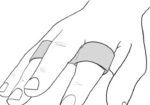Ultimate Guide to Continuing Ed for Occupational Therapists in 2025
Filed under Uncategorized
Staying current in the ever-evolving field of occupational therapy is not just a good idea—it’s a requirement. Whether you’re a seasoned practitioner or just getting started, continuing ed for occupational therapists ensures you’re equipped with the latest knowledge, tools, and techniques to provide the highest standard of care.

What Is Continuing Education in Occupational Therapy?
Definition and Purpose
Continuing education (CE) in occupational therapy refers to structured learning activities designed to maintain and improve the competency of practitioners. These educational opportunities may include workshops, online courses, certifications, and conferences tailored to enhance professional knowledge and skills.
CEU Requirements Explained
CEUs, or Continuing Education Units, are the currency of professional development. One CEU generally equals 10 contact hours of participation. Most states require a specific number of CEUs every 1–2 years for licensure renewal.
Why Continuing Education Is Crucial for OTs
Professional Development
The field of occupational therapy is dynamic. CE courses help professionals learn about new treatment techniques, evidence-based interventions, and technological advancements.
State Licensure Maintenance
Almost all U.S. states mandate CEUs for occupational therapy license renewal. Failure to comply can result in penalties or loss of licensure.
Enhancing Clinical Skills
Continuing ed helps therapists deepen their expertise in niche areas like hand therapy, pediatrics, or geriatrics—opening doors to specialization and career growth.
CEU Requirements by State in 2025
Overview of Varying State Regulations
Each state has its own rules regarding the type and number of CEUs required. For example, some states allow a percentage of credits from online learning, while others may demand live in-person training.
Example: California vs. New York
- California: Requires 24 CE hours every 2 years; 50% can be online.
- New York: Requires 36 contact hours every 3 years; online courses must be from state-approved providers.
Approved Providers for CEUs
AOTA-Approved CEU Providers
The American Occupational Therapy Association (AOTA) accredits many reputable CE providers. Hand Therapy Academy is one of the best AOTA Approved Providers on the market.
University-Affiliated Courses
Colleges and universities often offer CEUs through professional development programs that are highly respected and may count toward certifications.
Workshop and Conference Credits
Attending OT-related events can earn CE credits, especially if they include hands-on training and are led by industry experts.
Online vs. In-Person CEUs
Benefits of Online Learning
- Flexibility to learn anytime, anywhere
- Lower costs
- Access to diverse topics and instructors
When to Choose In-Person Workshops
In-person events are ideal for learning hands-on skills, networking with peers, and engaging in live discussions and case studies.
Most In-Demand CE Topics in 2025
- Hand Therapy: Tendon rehabilitation, splinting techniques, post-surgical care
- Pediatric Interventions: Sensory integration, school-based therapy strategies
- Neurological Rehab: Stroke recovery, traumatic brain injury care
These topics not only keep your skills sharp but also align with trending needs in the field.
Cost of CEUs for Occupational Therapists
Average Price Per Credit Hour
Costs vary widely. Expect to pay around $15–$30 per credit hour. Bundled plans or subscriptions can reduce this cost significantly.
Free CEU Resources
- State occupational therapy associations
- AOTA webinars
- Nonprofits and government-sponsored events
How to Track and Document Your CEUs
CEU Tracking Apps
Apps like CE Broker and Certemy make it easy to track completed credits and monitor licensure deadlines.
AOTA Documentation Standards
Always keep certificates, receipts, and transcripts. Include course titles, dates, providers, and earned CEU amounts for each activity.
How to Choose the Right CE Course
- Aligning With Career Goals: Choose topics that boost your credentials in desired practice areas.
- Accreditation and Quality Checks: Ensure the provider is approved by AOTA or your state board to avoid wasted time and money.
Certification Programs That Count as CEUs
- Certified Hand Therapist (CHT)
- Assistive Technology Professional (ATP)
- Lymphedema Certification
These certifications often provide CEUs and can increase your earning potential and job opportunities.
Common Mistakes to Avoid in CE Planning
- Missing Deadlines: Set calendar reminders or use tracking apps.
- Choosing Non-Accredited Providers: Check state board approval before enrolling.
- Overloading Last Minute: Spread learning throughout the year to reduce stress.
Special CE Opportunities for School-Based OTs
- IEP Training
Learn how to contribute effectively to Individualized Education Plans. - Sensory Integration Programs
Deepen understanding of sensory processing disorders common in school settings.
Continuing Ed for Occupational Therapy Assistants (COTAs)
Differences in Requirements
While similar to OTs, COTAs often have slightly fewer CEU requirements depending on the state.
Career Growth Options
COTAs can pursue CE in supervision, documentation, and transitioning into new roles like case management or administration.
FAQs About Continuing Ed for Occupational Therapists
1. How many CEUs do I need to renew my license?
It depends on your state, but most require 20–30 hours every 2 years.
2. Can I use online courses for all my CEUs?
Some states allow 100% online; others cap it at 50%. Always check local regulations.
3. Do certifications count as CEUs?
Yes, many certifications offer CEUs that count toward license renewal.
4. Are AOTA courses automatically accepted by all states?
Mostly yes, but a few states require specific approvals. Double-check your board’s site.
5. What happens if I don’t complete my CEUs in time?
You may face fines, license suspension, or mandatory remediation.
6. Where can I find free CEU opportunities?
Try AOTA’s website, state OT associations, and nonprofit healthcare organizations.
Conclusion and Expert Advice
To thrive in 2025 and beyond, continuing ed for occupational therapists isn’t optional—it’s essential. Whether you’re brushing up on telehealth delivery or diving into pediatric sensory processing, staying educated ensures your success and your patients’ well-being. Stay proactive, track your progress, and always choose reputable providers to make the most of your CE journey.
More To Read
3 Common Reasons for Ulnar-Sided Wrist Pain and Non-Surgical Hand Therapy Treatment Options
3 Common Reasons for Ulnar Sided Wrist Pain
Read MoreWhich orthosis design is better for zone 5-6 extensor tendon injuries, a relative motion orthosis compared to a dynamic extension orthosis?
M. Buhler, ˝ D. Gwynne-Jones, M. Chin et al., (2023) Are the outcomes of relative motion extension orthoses noninferior and cost-effective compared with dynamic extension orthoses for management of zones V-VI finger extensor tendon repairs: A randomizedcontrolledtrialJournalofHandTherapy. The Skinny: The aim of this study was to compare the data for two different types of orthoses…
Read MoreHand Therapy Marketing 101
Marketing 101 – 5 Tips for Your Therapy Clinic Confession: I hate marketing. It’s my least favorite part of my job. It is so hard to open yourself up to that much rejection but still stay positive. It feels like the professional version of blind dating, except the other person probably already has a significant…
Read MoreMirror therapy after a peripheral nerve repair in hand therapy
Rapid Review Paula, M. H., Barbosa, R. I., Marcolino, A. M., Elui, V. M., Rosén, B., & Fonseca, M. C. (2016). Early sensory re-education of the hand after a peripheral nerve repair based on mirror therapy: a randomized controlled trial. Brazilian journal of physical therapy, 20(1), 58–65. https://doi.org/10.1590/bjpt-rbf.2014.0130 The Skinny: Therapy is often provided following an…
Read MoreSign-up to Get Updates Straight to Your Inbox!
Sign up with us and we will send you regular blog posts on everything hand therapy, notices every time we upload new videos and tutorials, along with handout, protocols, and other useful information.






